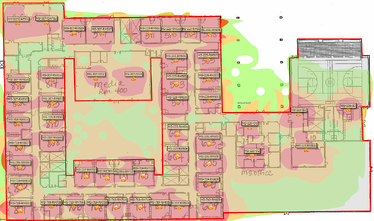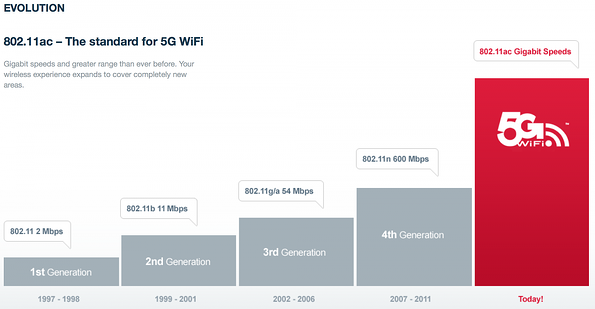
I am assuming that you are reading this article because you googled “How to prepare for 802.11ac” and found your way here.
This means you either already have 802.11n wireless or you are in the midst of considering a migration to 802.11n but heard that 802.11ac is around the corner and wanted to explore potentially skipping over 802.11n and going straight to 802.11ac technology.

My current recommendation is to move forward with your 802.11n implementation now because mass adoption of 802.11ac is still 18 months or more away and right now there aren’t any benefits yet to having it. 802.11n still has lots of life left in it and there is much to benefit from using it now.
Current 802.11n technology won’t be phased out until 2018 which means you can get 5 years out of an investment today. I am a proponent of the mindset that you take advantage of what is available now and not wait for the “next big thing”.
There will always be the “next big thing” around the corner especially with wireless networking and if you are perpetually waiting for it you will never be able to enjoy the benefits of what is available now.
However, I do recommend that in moving forward with your 802.11n implementation that these considerations are ones you should make now. Taking care of these now or at least planning their institution shortly will allow for a successful and less painful 802.11ac migration when the time comes.
1. Switching has to be Gigabit at the edge
802.11ac in its first phase will be offering 600Mbps to 1.3Ghz bandwidth. This is going to demand that the edge switching infrastructure can keep up with the data flow and 10/100 switching will not cut it.
Factor this upgrade in now as you should any way if you are doing an 802.11n upgrade. 802.11n offers bandwidth to the client up to 600Mbps which means that a 10/100 edge switch port is the bottleneck in your secure wireless network.
2. Recommend 10Gb from the edge to the core
Uplinks from edge switches are recommended to have 10Gb interfaces to your data core. At a minimum make sure your uplinks can support some type of link aggregation protocol like LACP or Ether Channel.
Aggregating links to give you 2, 3 or 4Gbps to the core will provide better performance than a single 1Gb link. Again with each AP offering 600Mbps to 1.3Gbps of bandwidth and having multiple APs on a switch could potentially oversaturate your link.
3. Core switching will need 10Gb interfaces
Aggregation switches will need 10Gb links to accommodate the uplinks from the edge switching infrastructure.
Core switches will also need 10Gb interfaces. They will need these high throughput interfaces not only to support the links from the aggregation switches but also for connectivity with wireless controllers.
The wireless controllers coming from manufacturers today that are in support of 802.11ac have up to four 10Gb interfaces which allows for up 40Gbps of throughput to the network.
4. Switching needs to be PoE+ (802.3at) capable
802.11n access points use up to 15mw of PoE but 802.11ac access will be north of that. I have seen some estimates in the 20-25mw range which 802.3af (regular PoE) will not support. Make sure your switching can support 802.3at PoE+ (make sure there is a plus sign at the end of PoE!) and you will be good to go.
5. RF designs have to be done from a 5Ghz perspective
802.11ac will only offer the high bandwidth benefits in the 5Ghz spectrum. 2.4Ghz will still be supported on access points but the speeds will be that which we have now with 802.11n.
This will mean that your AP density will be higher because the 5Ghz wavelength is shorter and attenuates greater than 2.4Ghz when transmitting through building materials. Knowing that this was coming and that 5Ghz has become the preferred band to use we have been doing all of our WLAN RF designs from the 5Ghz perspective for some time.

802.11ac technology shows a lot of promise in what it can do for client performance. From high speeds to optimizing client connections there is a lot to benefit from when you finally implement 802.11ac. Make sure you get all the benefits you can both from 802.11n and 802.11ac by implementing the considerations above I have outlined for you.

If you’re considering upgrading your wireless network infrastructure and have any questions or would like a free consultation, you may contact us here. We have deployed and support 250+ wireless networks all over the United States. Also, check out our free wireless network design kit as an additional resource. Good luck!




